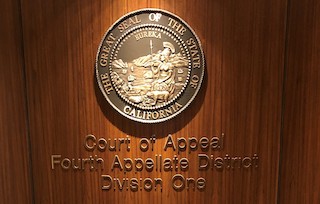Is it fair to convict someone of driving under the influence (DUI) of alcohol, causing injury (Vehicle Code § 23153(a)), and also driving under the influence of alcohol and a drug causing injury (§ 23153(e)) arising out of the same accident? Is not section 23153(a) a lesser-included offense of section 23153(e)?
The Gist of This Article: Driving under the influence of only alcohol (Vehicle Code §§ 23152(a) or 23153(a)) is not a lesser-included offense of driving under the combined effects of alcohol and drugs (§§ 23152(e) or 23153(e)), so one can be convicted of violating both sections. To find out why, read the article below.
Indeed, Penal Code § 654 prohibits multiple convictions based on necessarily included offenses. Under the “elements” test, “if a crime cannot be committed without also necessarily committing a lesser offense, the latter is an included offense within the former. People v. Reed (2006) 38 Cal.4th 1224, 1229. The latter is then considered a “lesser-included” offense of the former.
With alcohol, however, this simplistic one plus one approach does not work so well. For example, someone can drive after taking a drink and not be impaired. However, the same amount of alcohol, when combined with a drug, may impair the driver. Therefore, DUI being only under the influence of alcohol is different, arguably, from being DUI due to alcohol and drugs.
The San Diego case of William Daniel Cady, reviewed by the Fourth Appellate District, held this to be true (People v. William Daniel Cady (2017 DJDAR 30).
 Fourth Appellate District Court of Appeals Division 1 San Diego
Fourth Appellate District Court of Appeals Division 1 San Diego
To understand this, one needs to appreciate the facts of the case. In January of 2014, Mr. Cady and five of his friends jumped in Cady’s Cadillac Escalade for a night of drinking in local bars in the Gas Lamp District of downtown San Diego. After leaving the second bar at about 11:00 p.m., the group jumped in the Escalade and Cady drove them onto 805 toward State Route 52, with the destination being the homes of two of the passengers.
As Cady approached the transition ramp to State Route 52, he was going so fast that one of his passengers told him to slow down. He replied, “I’ll drive this fucking car however the fuck I want” and accelerated further. He laughed as he did so. Shortly thereafter, he lost traction, causing the Escalade to roll at least five times. Another vehicle then hit the Escalade. Three of his passengers died.
An accident reconstructionist estimated Cady was driving 87 to 97 miles per hour when he lost control.
A blood draw of Cady after the accident estimated his BAC at about 0.18%. He was also found to have cannabinoids in his blood. An expert testified that the combination of marijuana and alcohol can have an “additive effect” in impairment so that the combined effect is greater than either substance on its own.
The case went to trial and the jury found Cady guilty of all counts except second-degree murder. Two of the counts were violations of Vehicle Code § 23153(a) and § 23153(e), which he was found guilty of both. The trial court sentenced Cady to 18 years in state prison.
Cady appealed the verdict, contending that the crime of driving under the influence of alcohol causing injury, § 23153(a), is a lesser-included offense of the crime of driving under the influence of the combined influence of alcohol and a drug causing injury.
The Fourth Appellate District evaluated the history of the statutes prohibiting driving under the influence of alcohol, leading up to the enactment of Vehicle Code § 23153(e) in January, 2014. It found that the current version of the statute shows there are three different possibilities of DUI: driving under the influence of only alcohol, driving under the influence of only drugs and driving under the combined influence of alcohol and drugs.
Thus, the elements of the crime are distinguishable (different) and convictions for both 23153(a) and 23153(e) do not violate the elements test described above. One is not a lesser-included offense of the other.
Consequently, the appeals court affirmed the trial court’s conviction of Cady.
The citation for the Fourth Appellate District Court ruling discussed above is People v. William Daniel Cady (4th App. Dist., 2017) 7 Cal.App.5th 134, 208 Cal. Rptr. 3d 624.
For more information about sentencing issues, please click on the following articles:
- California Supreme Court Rules Multiple Punishments for Single, Gang-Related Act Violates Penal Code § 654
- May a Sentence Enhancement Be Applied Twice on the Same Defendant for Acts on the Same Victim in the Same Day?
- What Punishment Do I Face for First-Time DUI?
Contact us.
 Fourth Appellate District Court of Appeals Division 1 San Diego
Fourth Appellate District Court of Appeals Division 1 San Diego